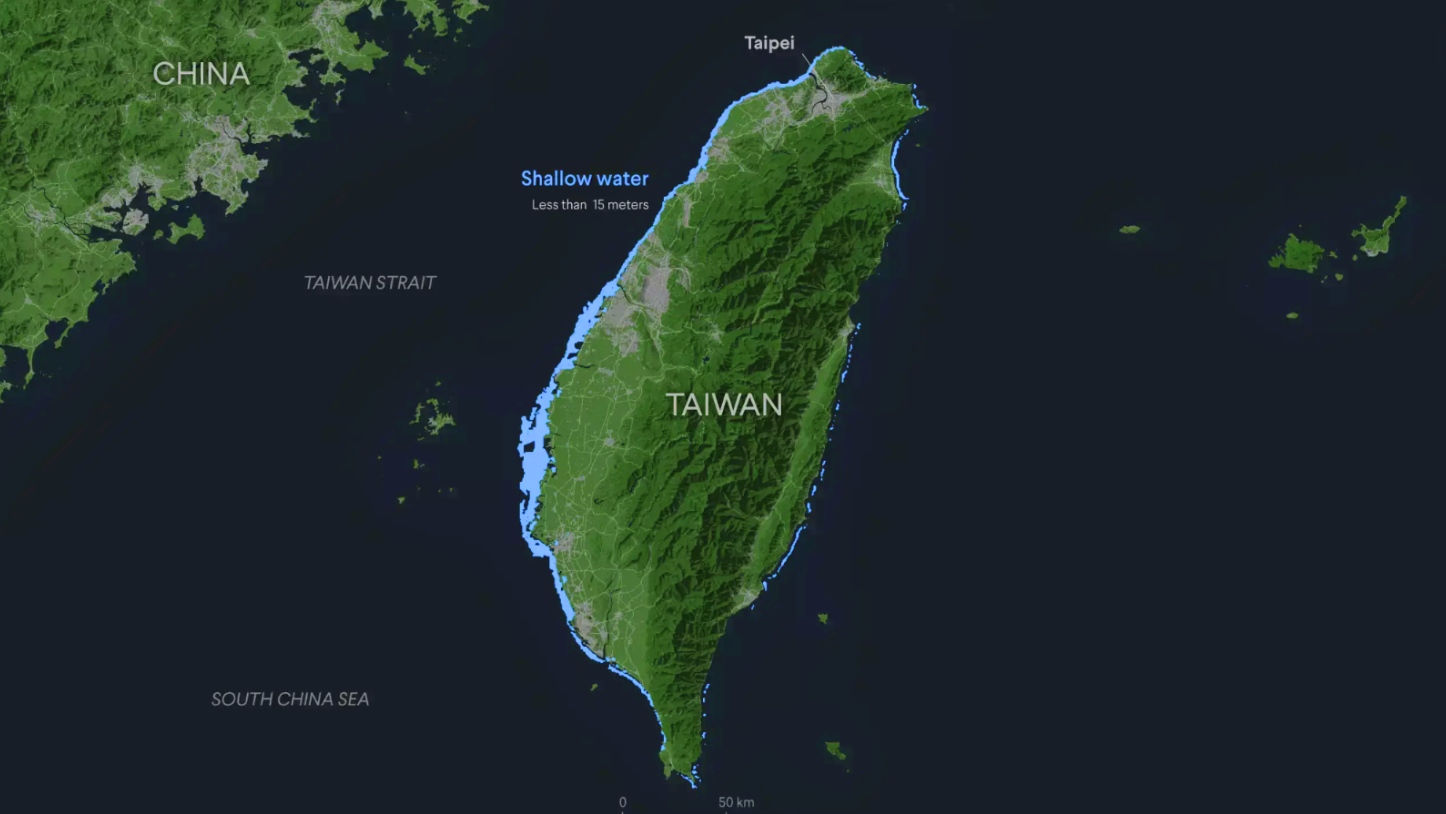Taiwan Strait/Formosa Strait

- 25 May 2024
Why is it in the News?
China ended two days of war games around Taiwan, in which it simulated attacks with bombers and practised boarding ships, and Taiwan's defence ministry detailed on Saturday the surge of Chinese warplanes and warships involved.
About the Taiwan Strait:
- Geography: The Taiwan Strait, also known as the Formosa Strait, is a 180 km-wide body of water separating mainland China from the island of Taiwan.
- It lies between the coast of Fujian Province in China and Taiwan.
- Location: The strait is part of the South China Sea and connects to the East China Sea in the north.
- The seafloor is primarily a continental shelf extending from the Asian continent, with Taiwan situated on the outer edge.
- The strait is relatively shallow, with an average depth of about 490 feet and a minimum depth of 82 feet.
- Islands: Major islands on the Taiwan side include Penghu (or Pescadores), Kinmen, and Matsu.
- On the Chinese side, Xiamen and Pingtan are significant islands.
- While Xiamen and Pingtan are administered by the People's Republic of China, Penghu, Kinmen, and Matsu are governed by the Republic of China (Taiwan).
- Shipping Corridor: The Taiwan Strait is a vital global shipping route, with nearly 50 per cent of global container shipping passing through the Taiwan Strait.
- Key ports in the region include Amoy in mainland China and Kao-hsiung in Taiwan.
- Historical Significance: The strait has been a site of military confrontations between the People's Republic of China and Taiwan since 1949, following the Chinese Civil War.
- The Kuomintang forces, led by Chiang Kai-shek, retreated across the strait and established their government in Taiwan.
- Median Line: The median line is an informal dividing line in the Taiwan Strait, established during the Cold War to reduce the risk of military clashes between China and Taiwan.
- Although not formalized by any treaty, it served as a tacit boundary until 2019, when Chinese military aircraft began crossing it.
- Beijing has since increasingly challenged the existence of the median line by frequently sending warplanes over it.
